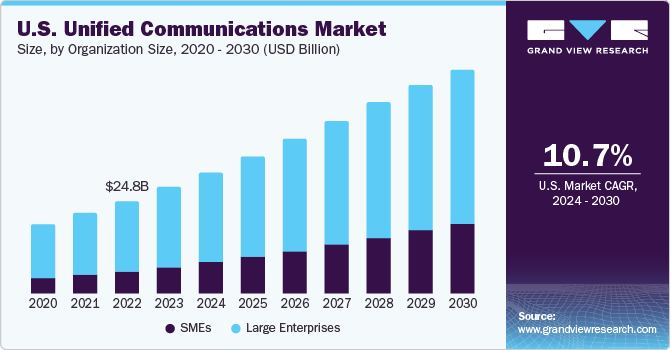Communications
- by:
- Nick H
Key Points
The communications sector is essential infrastructure, powering global connectivity
Rapid innovation in 5G, fiber optics, streaming, and cloud computing is driving sector growth
Regulatory changes, intense competition, and evolving consumer behavior present both challenges and opportunities
For adsense add
Advertisement

affiliate add
For adsense add
Mail Sign Up
Get The Latest News & Stock Picks
Stay ahead of the market with expert news, actionable tips, and exclusive stock picks delivered straight to your inbox. Join a community of investors who value real insights and smarter strategies. Sign up now and get the edge you need to invest with confidence.
By submitting your email, you agree to receive updates and promotional content from our team. You can unsubscribe at any time. For more details, please review our Privacy Policy.
For adsense add
For adsense add
In an era where information travels at the speed of light and daily life revolves around connectivity, the communications sector stands as the backbone of the global economy. From the fiber-optic cables beneath our feet to the smartphones in our hands, this sector shapes how people, businesses, and societies interact. It is not simply an industry; it is the invisible web that enables commerce, education, healthcare, entertainment, and innovation.

With the rise of streaming media, social platforms, 5G networks, and next-generation technologies, the communications sector has never been more dynamic or more essential. Investors, business leaders, and everyday consumers all have a stake in understanding its structure, opportunities, and challenges.
What Is the Communications Sector? Understanding Its Core
The communications sector is an umbrella for companies that facilitate the transfer of information. This includes telecommunications, media, internet services, and the vast infrastructure that supports them. Historically, it was limited to telephone operators and broadcasters. Today, it encompasses a sprawling network of businesses, technologies, and platforms.
Key Components of the Communications Sector
Telecommunications: Firms that own and operate the physical networks—think cell towers, satellites, undersea cables, and fiber-optic lines—that carry voice, data, and video.
Media & Content: Companies that create, package, and distribute content, including TV networks, movie studios, streaming platforms, news organizations, and social media giants.
Internet Services: The digital platforms that enable everything from instant messaging to cloud-based collaboration and content distribution.
Infrastructure Providers: Firms specializing in building and maintaining the backbone—such as tower operators and fiber network specialists—that make global communication possible.
These groups increasingly overlap. A single corporation may own the infrastructure, deliver the service, and create the content. The lines between connectivity and media have blurred, giving rise to innovative new business models and partnerships.
How the Sector Has Evolved
A generation ago, the communications sector meant phone calls and television. The internet changed everything, accelerating convergence between telecom and media. Smartphones now serve as all-in-one communication, entertainment, and work devices. The rise of streaming video, cloud computing, social networks, and real-time collaboration tools has redefined the sector’s reach and influence.
Regulatory changes have also played a major role. The S&P 500 officially reclassified “Communication Services” in 2018 to recognize the importance of tech-driven platforms and digital media. This update reflected a reality: the sector is now a blend of legacy telecoms, media conglomerates, and disruptive internet companies.
The Driving Forces Shaping the Communications Sector
Technology: The Engine of Transformation
The communications sector thrives on constant innovation. Several trends are now propelling it into the next era:
5G Networks: Ultra-fast, low-latency wireless networks are powering not only smoother video streaming and mobile gaming but also enabling the rise of smart cities, autonomous vehicles, and the Internet of Things (IoT). The global 5G rollout is creating massive investment opportunities and opening doors for new applications.
Fiber Expansion: Demand for high-speed, reliable internet is pushing telecoms and infrastructure firms to expand fiber-optic networks into homes and businesses, supporting everything from remote work to telemedicine.
Cloud Computing & AI: Communications providers are integrating cloud-based services and artificial intelligence to enhance security, automate customer service, and analyze vast data flows.
Streaming & On-Demand Content: The shift from scheduled programming to on-demand streaming is driving fierce competition among traditional networks, tech giants, and new media startups.
Consumer Behavior: Always Online, Always Connected
Consumers expect instant access to news, entertainment, shopping, and social interaction, on any device, at any time. This demand has pushed companies to build resilient, scalable networks and develop compelling content that attracts and retains attention.
Social media has become a primary channel for communication, news, and even commerce. Platforms like Meta’s Facebook and Instagram, Alphabet’s YouTube, and X (formerly Twitter) have turned billions of users into both creators and consumers, accelerating trends and shaping public discourse.
Regulation: A Sector Under the Microscope
Governments have a strong hand in the communications sector. Key issues shaping the landscape include:
Net Neutrality: The debate over whether internet providers can prioritize certain content has major implications for competition and consumer choice.
Privacy & Data Security: Protecting user data is a regulatory priority, especially as cyberattacks and privacy concerns rise.
Access & Equity: Closing the digital divide is a global goal, with policymakers pushing for affordable, high-speed internet in underserved and rural areas.
Mergers & Antitrust: Regulators closely scrutinize mergers, acquisitions, and market dominance to ensure fair competition and protect consumers.

Communications Sector Outlook: Growth, Risks, and Opportunities
The global communications sector is experiencing a period of unprecedented expansion and transformation. As of 2025, industry forecasts show worldwide spending on telecom services and pay TV is set to surpass $1.6 trillion. Streaming, cloud computing, and mobile data usage continue to soar, reshaping the competitive landscape in nearly every major market.
Growth Drivers and Market Prospects
Multiple forces are fueling the sector’s robust momentum and promise for further gains in the coming years:
5G proliferation is reshaping connectivity. By 2027, over half of all mobile connections worldwide are expected to be on 5G networks, a change that will unlock new business models, speed up innovation, and support technologies from autonomous vehicles to smart cities.
Streaming expansion continues at a breakneck pace. Video streaming revenue is on track to outpace cable and broadcast TV, with leading services such as Netflix, Disney+, and Amazon Prime Video reaching new markets and demographics.
Emerging markets are accelerating global growth. Rapid internet adoption in Asia, Africa, and Latin America is bringing hundreds of millions of new users online, making these regions critical arenas for future market share and innovation.
Business digitalization is driving new demand. Enterprises worldwide are investing more in cloud infrastructure, cybersecurity, and unified communications, as remote and hybrid work models become a permanent fixture.
Challenges and Headwinds
While growth prospects are impressive, the sector faces substantial hurdles that require constant attention and strategic adaptation:
Intense competition puts downward pressure on margins, as new entrants, price wars, and technological advances disrupt traditional revenue streams.
Regulatory uncertainty is ever-present, with shifting privacy laws, antitrust investigations, and government oversight able to impact entire business models overnight.
Capital intensity remains a defining feature, since building and maintaining advanced networks like 5G and fiber optics demands huge upfront investment.
Content battles are escalating. The fight for exclusive streaming rights is driving up costs and fueling constant disruption in the media landscape.
Cybersecurity threats are on the rise, as more critical infrastructure and consumer data move online, increasing the sector’s vulnerability to cyberattacks and breaches.

Trends to Watch in 2025 and Beyond
The communications sector is evolving rapidly, shaped by breakthrough technologies and changing user expectations. Artificial intelligence is enabling more automated and personalized communications services, while telecoms are partnering with cloud giants to deliver low-latency, secure solutions for business clients. Sustainability is also moving to the forefront, with more companies focusing on energy-efficient networks and responsible data management in response to growing ESG concerns. Another major trend is the push toward immersive digital experiences, with companies like Meta investing heavily in the metaverse and virtual reality.
Major Companies and Their Impact
Industry leaders play a vital role in shaping the sector’s direction. In the U.S., AT&T and Verizon dominate telecommunications, delivering essential wireless, broadband, and enterprise services, all while leading the rollout of 5G. Globally, Deutsche Telekom and China Mobile are major players, each with vast subscriber bases and critical roles in network expansion.
On the content side, Netflix continues to set the bar for streaming, while Disney’s move into direct-to-consumer platforms is redefining legacy media. Alphabet, through YouTube, maintains its leadership in user-generated video and digital advertising. Social media giants like Meta (Facebook, Instagram, WhatsApp) connect billions globally, while platforms such as X (formerly Twitter) and Snapchat help shape public conversation and culture. Behind the scenes, infrastructure specialists like American Tower and Crown Castle provide the physical backbone that supports this surge in connectivity, while companies like Lumen Technologies and global innovators like Tencent and Reliance Jio drive new models for access and growth.
Options are powerful but require education and discipline. Always understand the potential outcomes before entering a trade, and avoid risking more than you can afford to lose.
How These Companies Shape the Sector
The collective impact of these firms goes far beyond individual services or platforms. Telecom giants continue to build and maintain the networks that enable all digital communication. Streaming and media companies drive demand for faster, more reliable broadband, while social media platforms connect people across borders and spark new trends. Infrastructure specialists and cloud providers ensure that data can move securely and efficiently. Their competition, collaboration, and constant innovation make the sector more dynamic—and more influential—each year.
Why the Communications Sector Matters to Investors
The sector offers several compelling advantages for investors:
Recurring revenue from subscription models and service contracts delivers reliable cash flow.
Strong growth potential is fueled by global 5G adoption, streaming expansion, and new users in emerging markets.
Innovation and disruption are constants, providing opportunities for outsized returns to leaders and early adopters.
Defensive qualities mean that even during economic downturns, demand for communication services remains stable.
Still, investing in the communications sector requires careful consideration of its unique risks, from regulatory shifts and capital requirements to ever-changing technology and competitive threats. For those who understand its drivers and trends, the sector remains a powerful engine of growth and transformation in the digital age.
For adsense add














